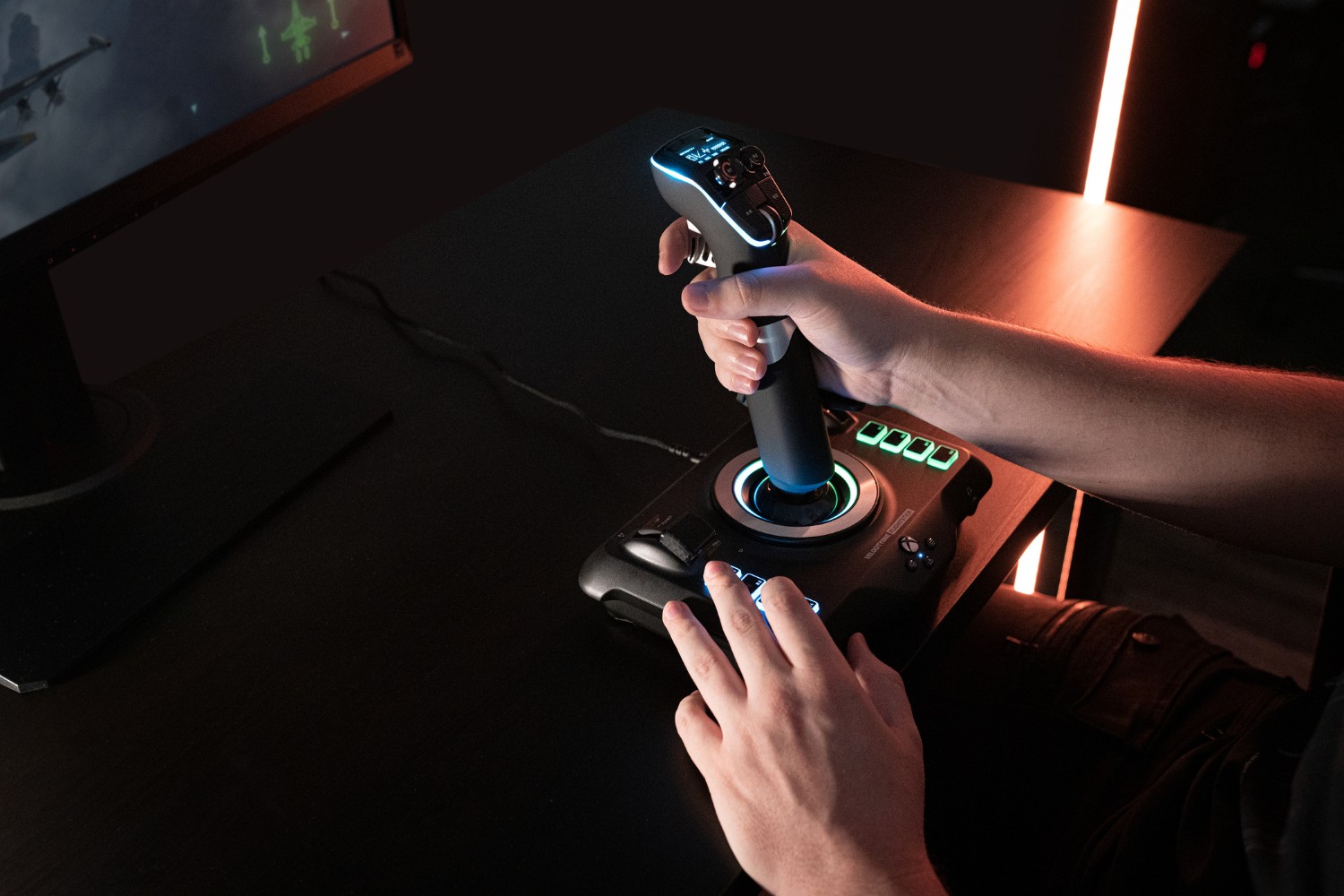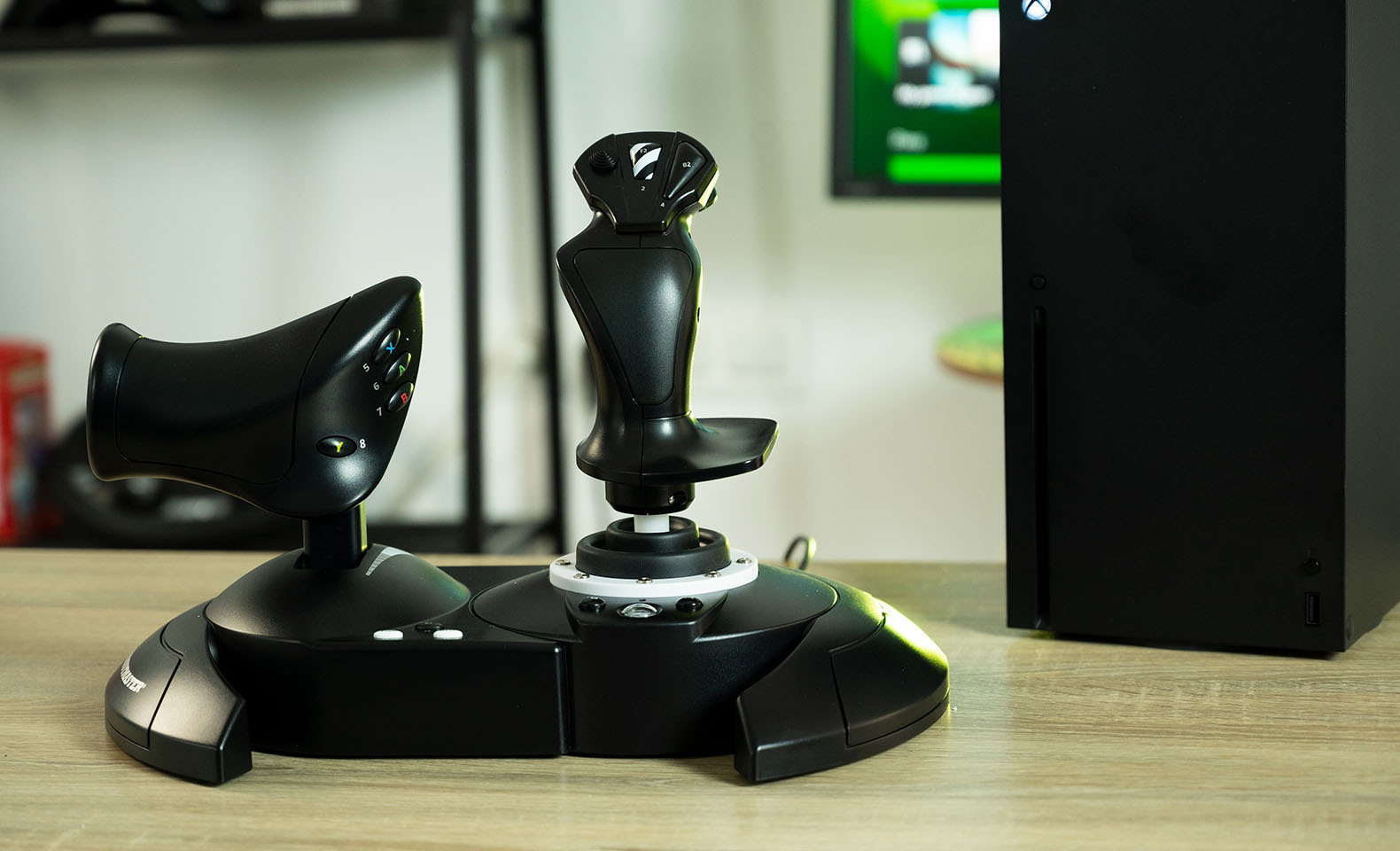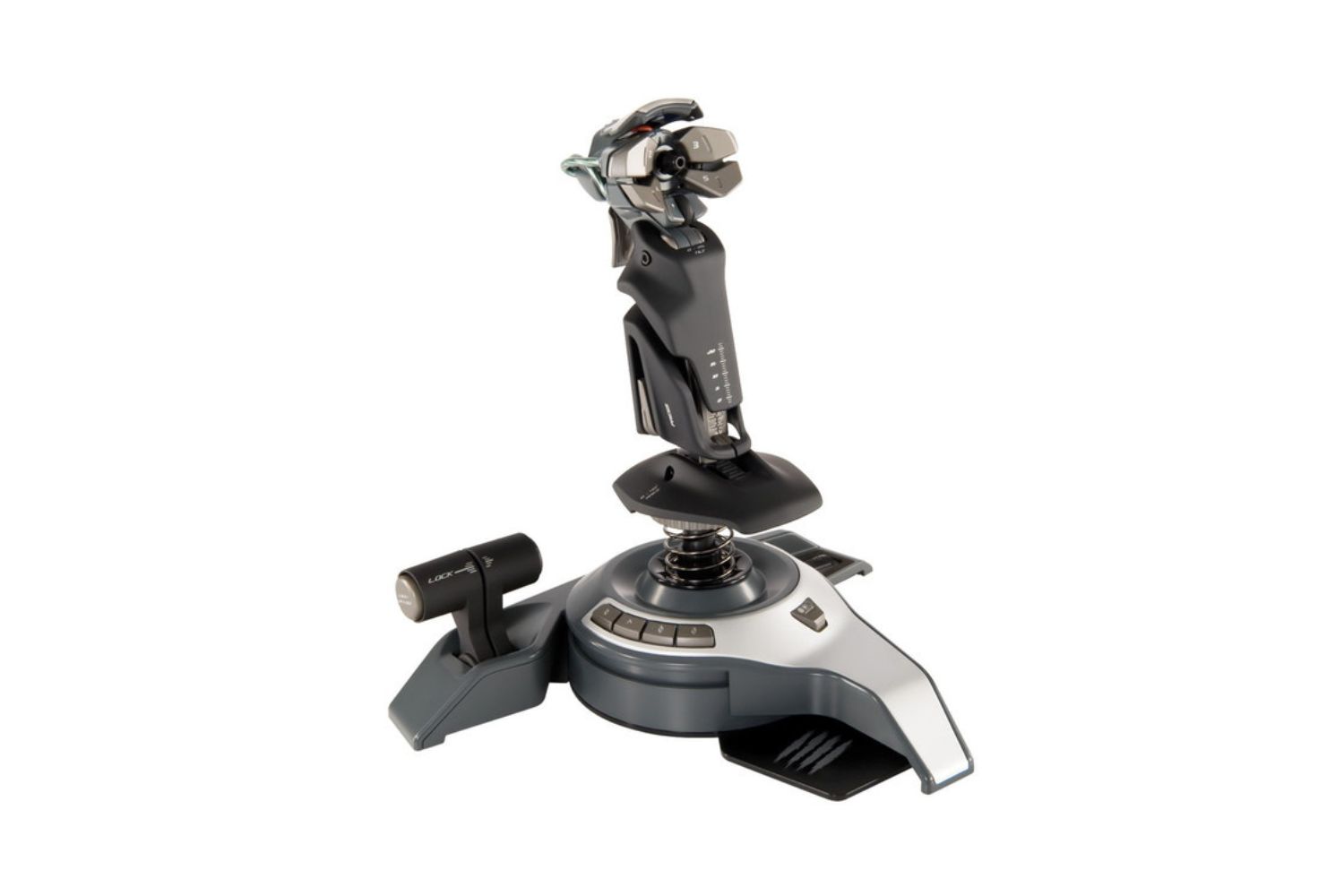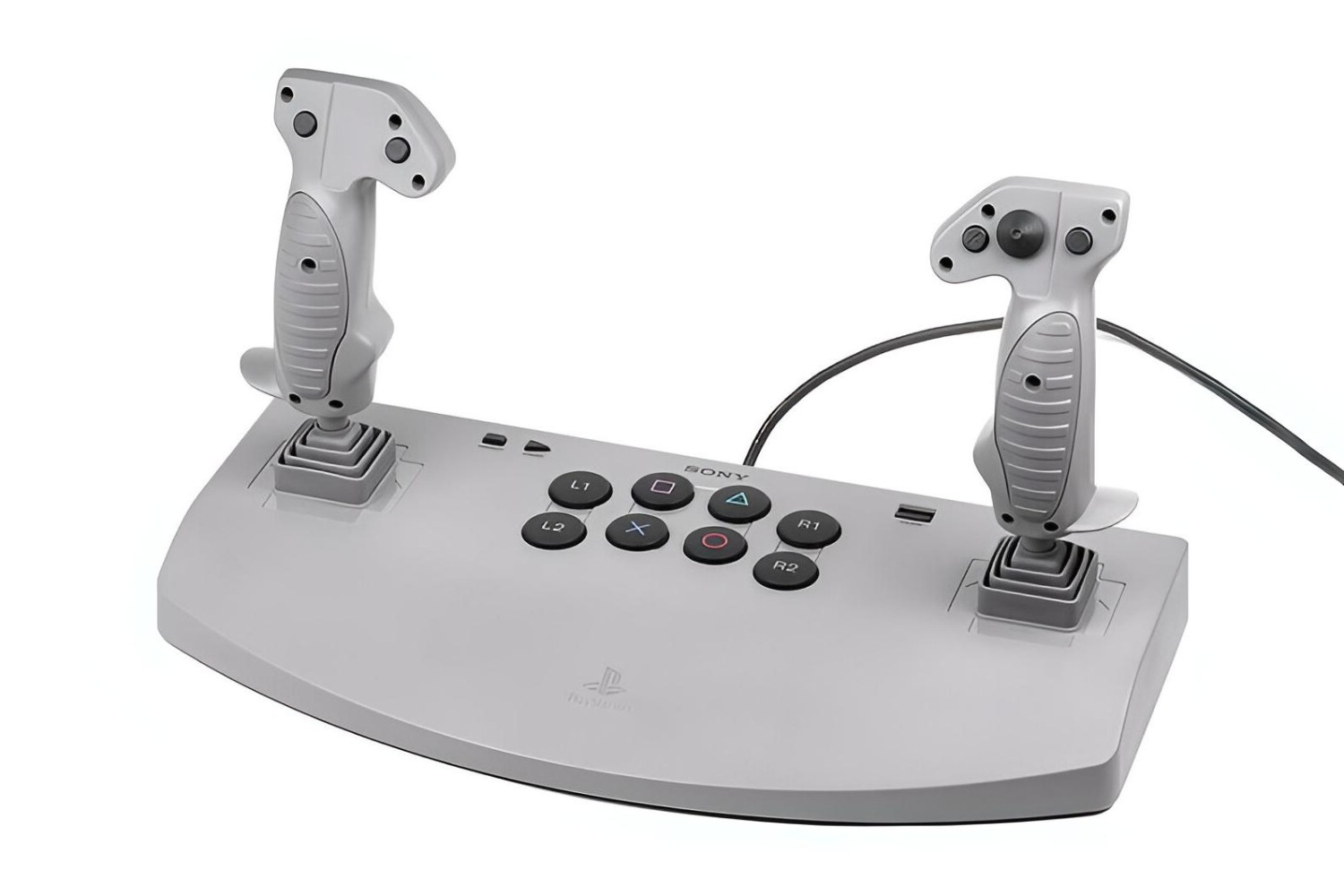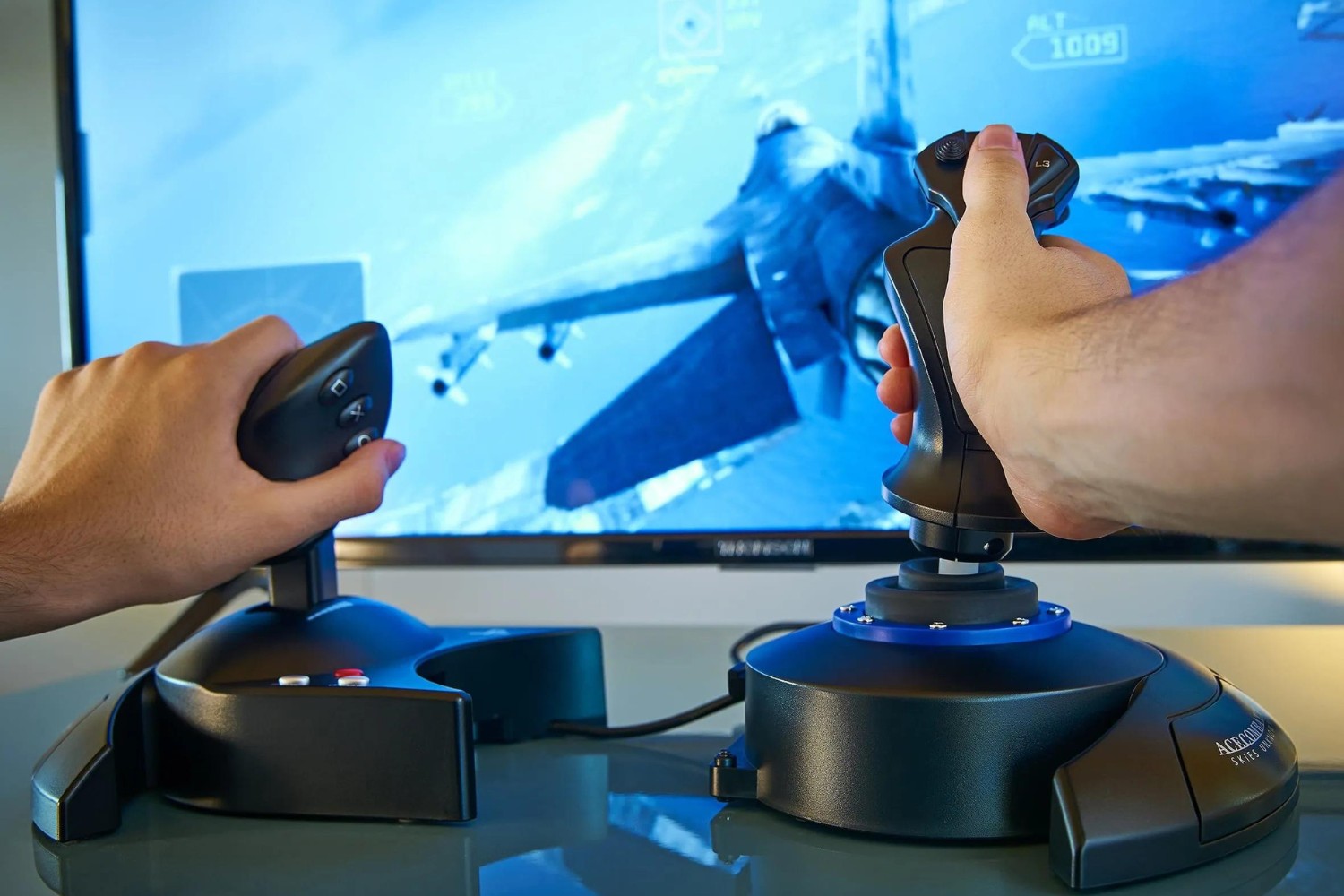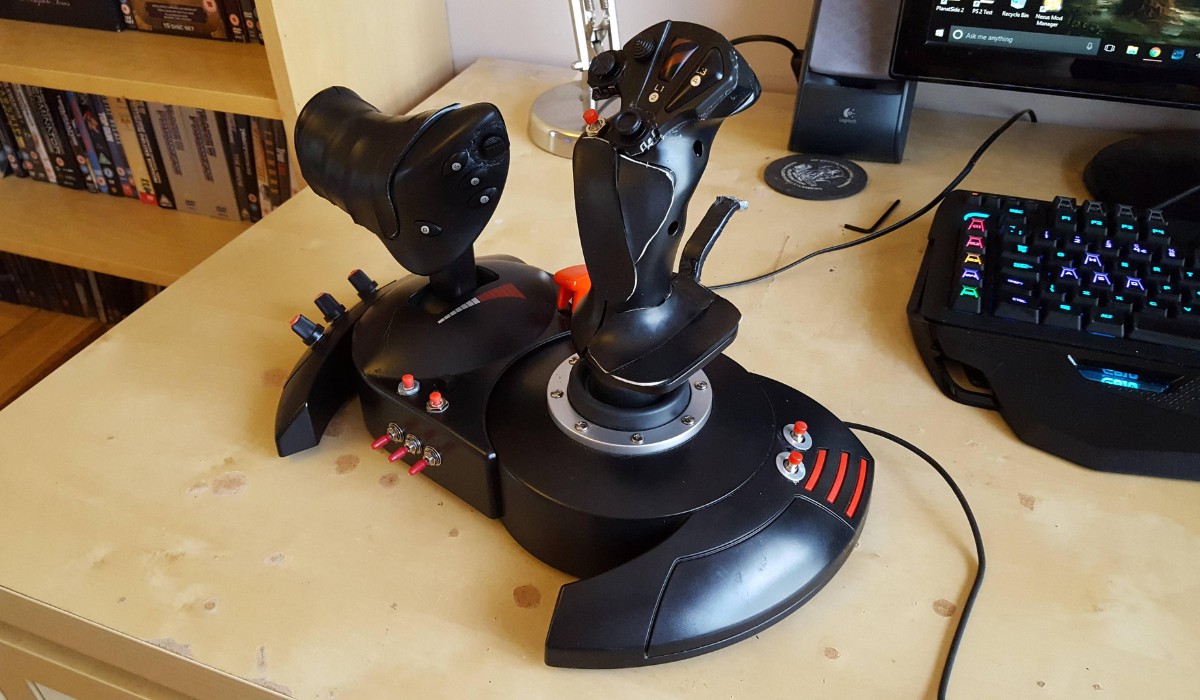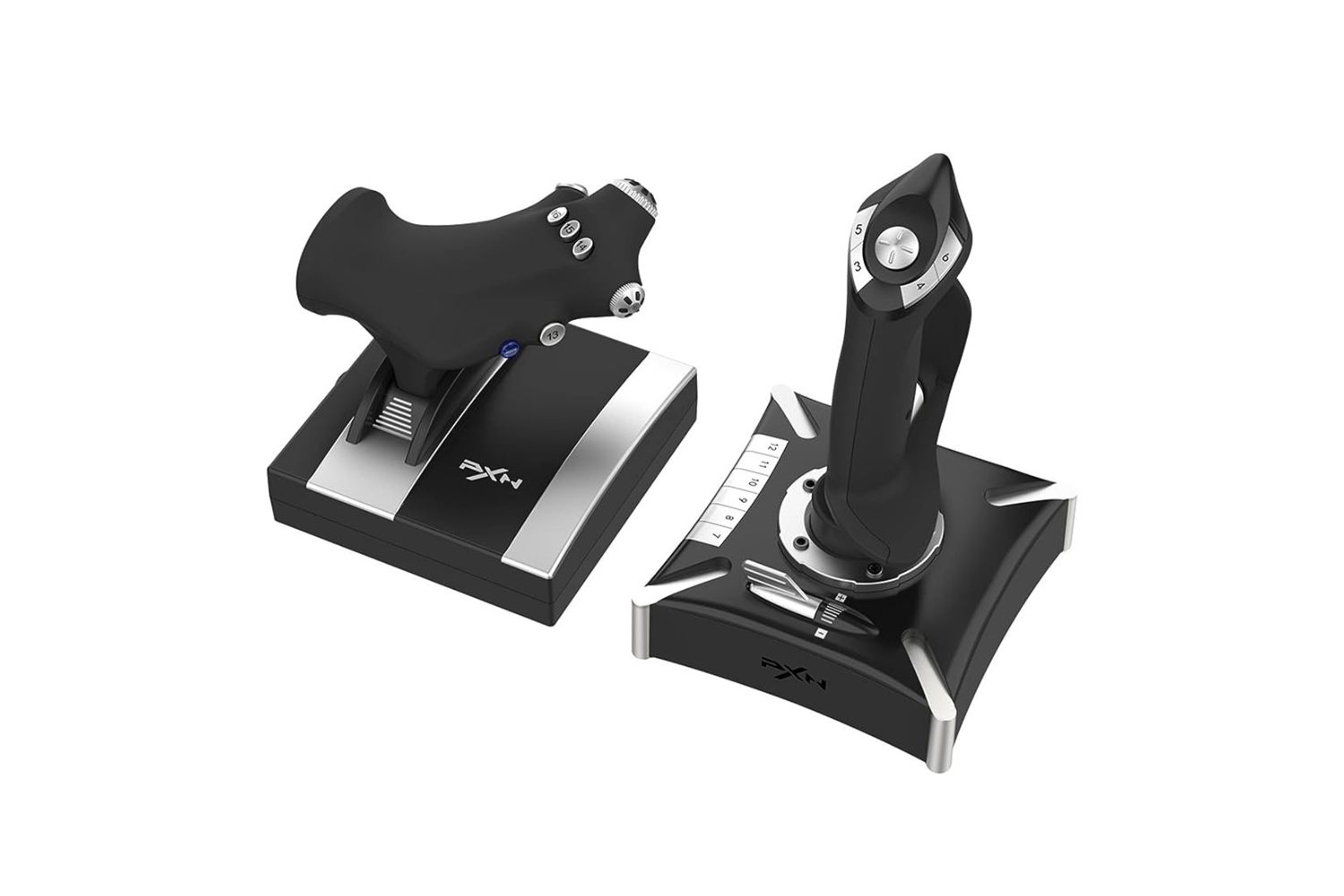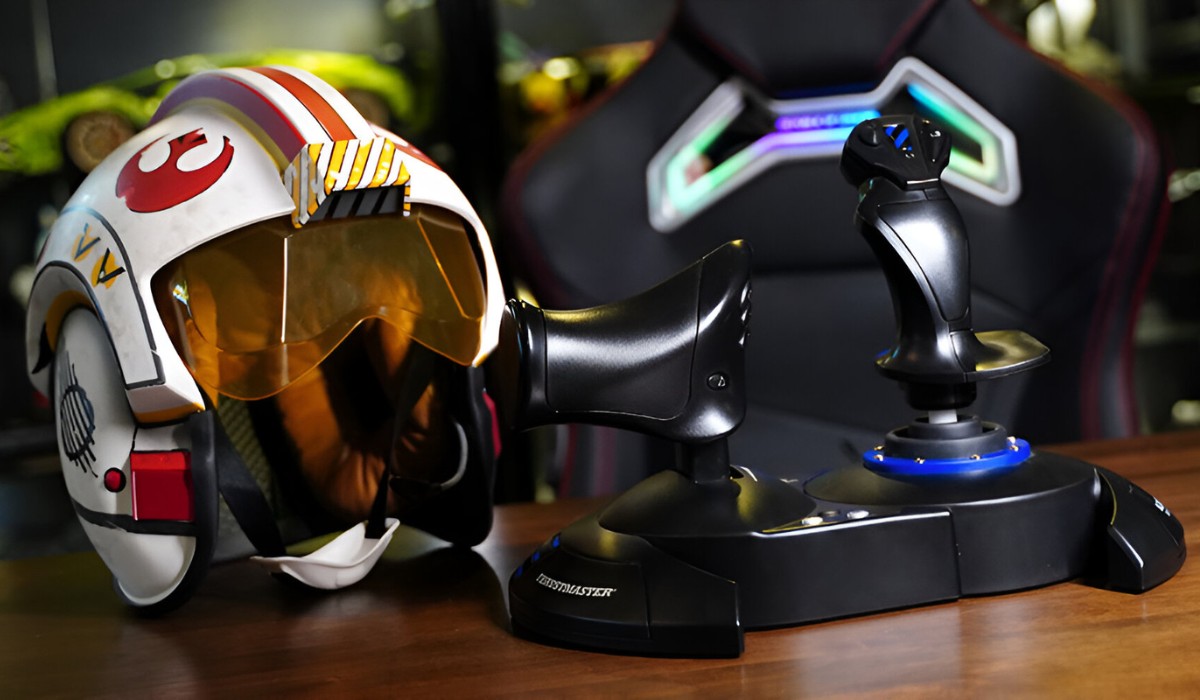Introduction
So, you've decided to take your flight simulation experience to the next level by using a flight stick. Whether you're a seasoned virtual aviator or a newcomer to the world of flight simulation, mastering the flight stick can significantly enhance your gaming experience. In this guide, we'll explore the ins and outs of controlling a flight stick, from understanding its mechanics to optimizing its performance for different games.
Using a flight stick adds a level of realism and precision to flight simulation games that a standard joystick or gamepad simply can't match. The intuitive control scheme allows for more immersive gameplay, giving you the sensation of actually piloting an aircraft. However, mastering the flight stick requires a combination of technical know-how and practical skill. With the right guidance, you can harness the full potential of this powerful peripheral and elevate your gaming experience to new heights.
In the following sections, we'll delve into the essential aspects of controlling a flight stick. We'll start by gaining a deeper understanding of the flight stick itself, exploring its components and how they contribute to the overall experience. Next, we'll walk through the process of setting up and calibrating the flight stick to ensure optimal performance. We'll also discuss how to adjust sensitivity and deadzones to fine-tune the controls according to your preferences.
Moreover, we'll explore the nuances of using the flight stick in different games, as each simulation title may have unique requirements and settings. Additionally, we'll provide valuable tips to help you improve your control and maneuverability, ultimately enhancing your overall gaming experience.
Whether you're delving into the world of flight simulation for the first time or seeking to refine your skills, this guide will equip you with the knowledge and techniques needed to control a flight stick effectively. So, buckle up and prepare for an exhilarating journey into the realm of virtual aviation!
Understanding the Flight Stick
Before delving into the intricacies of controlling a flight stick, it’s essential to grasp the fundamental components and functionalities of this specialized peripheral. A flight stick, also known as a joystick or control column, serves as the primary interface between the player and the virtual aircraft. Unlike traditional game controllers, a flight stick is designed to replicate the controls found in real aircraft, offering a more authentic and immersive experience.
At its core, a flight stick typically consists of a grip, base, and various buttons and switches. The grip, often modeled after the control yoke of an aircraft, provides a comfortable and ergonomic surface for the player to hold and manipulate. It may feature a range of controls, including a trigger for firing weapons, buttons for deploying landing gear or activating specific functions, and hat switches for camera control or other assignable commands.
The base of the flight stick serves as the anchor point, allowing for stable placement on a desk or mounting on a dedicated cockpit setup. Some advanced models may incorporate additional features such as throttle levers, rudder controls, or customizable modules to expand the functionality of the flight stick.
Understanding the axis configuration is crucial for mastering the flight stick. Most flight sticks utilize a three-axis system, comprising the pitch, roll, and yaw axes. The pitch axis controls the aircraft’s nose-up and nose-down movements, while the roll axis governs the aircraft’s banking or tilting motion. The yaw axis, often controlled by a twist mechanism on the grip, manages the aircraft’s directional movement, simulating the action of rudder pedals.
Furthermore, flight sticks may offer adjustable tension settings to customize the resistance and responsiveness of the controls, catering to individual preferences and playstyles. Some models also feature force feedback technology, providing tactile feedback and vibrations to simulate the sensation of flying and adding another layer of immersion to the gaming experience.
By familiarizing yourself with the anatomy and functionality of the flight stick, you’ll be better equipped to harness its capabilities and navigate the skies with precision and finesse. In the next section, we’ll explore the essential steps for setting up your flight stick, ensuring that it’s optimized for seamless integration with your chosen flight simulation software.
Setting Up Your Flight Stick
When embarking on your flight simulation journey with a flight stick, the initial setup process plays a pivotal role in ensuring a smooth and immersive experience. Properly configuring your flight stick involves a series of steps that optimize its functionality and compatibility with your chosen flight simulation software.
The first step in setting up your flight stick is to install any necessary drivers or software provided by the manufacturer. These drivers are essential for enabling the full range of features and customizations offered by the flight stick. Be sure to visit the manufacturer’s website to download the latest drivers and software updates to guarantee optimal performance and compatibility with your operating system.
Once the drivers are installed, it’s crucial to physically connect the flight stick to your computer. Most flight sticks utilize a USB connection for seamless integration with modern gaming systems. Ensure that the flight stick is securely plugged into an available USB port on your computer, and allow the system to recognize and configure the device.
After connecting the flight stick, it’s advisable to verify its functionality and calibration. Access the control panel or settings menu on your computer to confirm that the flight stick is detected and responding to input. Many flight sticks come with accompanying software that allows for fine-tuning of axis sensitivity, button assignments, and other customizable settings to tailor the controls to your preferences.
For an optimal setup, consider mounting the flight stick on a stable surface to prevent slippage during intense maneuvers. Some players opt for dedicated cockpit setups or mounting brackets to enhance the authenticity and stability of their flight stick configuration.
Furthermore, familiarize yourself with the button layout and functionality of the flight stick, ensuring that you can easily access essential controls without interrupting your gameplay. Many flight sticks feature programmable buttons, allowing you to assign specific functions or macros to streamline your interactions with the aircraft.
By meticulously setting up your flight stick and customizing its settings to align with your preferences, you’ll lay the foundation for a truly immersive and responsive flight simulation experience. In the following sections, we’ll delve into the critical process of calibrating the flight stick to fine-tune its performance and responsiveness, paving the way for precise and intuitive control in your virtual aviation endeavors.
Calibrating the Flight Stick
Calibrating your flight stick is a crucial step in optimizing its performance and ensuring precise control during your virtual aviation adventures. Calibration involves fine-tuning the sensitivity, deadzones, and axis response of the flight stick to match your preferences and playstyle, ultimately enhancing the realism and responsiveness of the controls.
Many flight sticks come with proprietary software that facilitates the calibration process. This software allows you to adjust various parameters, such as deadzone size, axis sensitivity, and button assignments, providing a high degree of customization to suit your individual needs. Additionally, the calibration software may offer presets tailored to specific game titles, streamlining the setup process for popular flight simulation software.
One of the primary aspects of calibration is adjusting the deadzones of the flight stick. Deadzones refer to the neutral zones around the center position of the control axes, where minimal input should not result in any response from the aircraft. By fine-tuning the deadzones, you can eliminate any unwanted jitter or drift in the controls, ensuring that small, subtle movements are accurately translated in the game without unintended fluctuations.
Furthermore, sensitivity adjustments play a crucial role in tailoring the responsiveness of the flight stick to your liking. Whether you prefer a more gentle and nuanced control input or a more aggressive and immediate response, the sensitivity settings allow you to customize the behavior of the flight stick according to your piloting style.
Axis response calibration is equally important, especially when dealing with complex aircraft maneuvers. By adjusting the responsiveness of the pitch, roll, and yaw axes, you can achieve a harmonious and intuitive control experience, mirroring the handling characteristics of real aircraft more accurately.
During the calibration process, it’s beneficial to experiment with different settings and test the flight stick’s performance in a variety of flight scenarios. This hands-on approach allows you to fine-tune the controls based on your comfort level and the specific demands of the flight simulation software you’re using.
Ultimately, calibrating your flight stick empowers you to tailor the controls to your exact specifications, providing a personalized and immersive flying experience. In the subsequent sections, we’ll explore the nuances of adjusting sensitivity and deadzones to further refine the control dynamics, ensuring that your virtual flights are as smooth and authentic as possible.
Adjusting Sensitivity and Deadzones
Fine-tuning the sensitivity and deadzones of your flight stick is a critical step in achieving precise and responsive control, ultimately enhancing the realism and immersion of your virtual aviation experience. Sensitivity adjustments allow you to tailor the responsiveness of the flight stick to your preferred handling characteristics, while optimizing deadzones helps eliminate unwanted input fluctuations and ensures smooth, accurate control.
When adjusting sensitivity, consider your piloting style and the specific requirements of the flight simulation software you’re using. If you prefer a more gradual and nuanced control input, reducing the sensitivity can provide a smoother and more deliberate handling experience, allowing for subtle adjustments during flight maneuvers. On the other hand, increasing the sensitivity can deliver a more immediate response to control inputs, ideal for swift and dynamic aircraft maneuvers.
Deadzones, which define the neutral zones around the center position of the control axes, play a crucial role in eliminating unintended jitter or drift in the controls. By customizing the deadzones, you can ensure that minimal input around the center position does not result in any aircraft response, maintaining stability and precision during flight. Adjusting deadzones is particularly beneficial for fine-tuning the control sensitivity around the center position, where small, subtle movements are critical for maintaining steady flight paths or making minor adjustments.
Many flight sticks offer dedicated software or configuration utilities that allow for seamless adjustment of sensitivity and deadzones. These tools provide intuitive interfaces for modifying the control parameters, enabling you to experiment with different settings and immediately observe their impact on the flight stick’s behavior.
It’s advisable to test the sensitivity and deadzone adjustments in various flight scenarios, from takeoffs and landings to aerial maneuvers, to gauge their effectiveness in different contexts. This hands-on approach allows you to iteratively refine the settings until you achieve a balance that aligns with your piloting preferences and the demands of your chosen flight simulation software.
By meticulously adjusting the sensitivity and deadzones of your flight stick, you can tailor the controls to your exact specifications, enhancing your ability to execute precise and seamless flight maneuvers. In the subsequent sections, we’ll delve into using the flight stick in different games and provide valuable tips for mastering its capabilities, further enriching your virtual aviation endeavors.
Using the Flight Stick in Different Games
As a versatile peripheral designed to replicate the controls of real aircraft, the flight stick offers a unique and immersive gaming experience across a wide range of flight simulation titles. Each game may present distinct control nuances and requirements, necessitating adaptation and customization to maximize the flight stick’s effectiveness in different virtual aviation scenarios.
Flight simulation games vary in their fidelity and complexity, ranging from casual, arcade-style experiences to highly realistic and detailed simulations. When using a flight stick in different games, it’s essential to familiarize yourself with the specific control mappings and configuration options provided by each title. Some games offer dedicated presets or profiles for popular flight stick models, streamlining the setup process and ensuring seamless integration with the game’s control scheme.
For arcade-style flight games, the flight stick can provide a heightened sense of immersion and responsiveness, allowing for intuitive and dynamic control over the aircraft. These games often prioritize accessibility and fast-paced action, leveraging the flight stick’s capabilities to deliver an engaging and exhilarating flying experience.
In contrast, realistic flight simulators demand a more nuanced and precise approach to utilizing the flight stick. These simulations strive to authentically replicate the intricacies of piloting various aircraft, requiring players to master complex control inputs and flight procedures. The flight stick’s ability to replicate the controls found in real aircraft enhances the authenticity of the simulation, providing a deeply immersive experience for enthusiasts and aspiring virtual aviators.
Furthermore, some flight simulation titles may feature diverse aircraft types, ranging from nimble fighter jets to commercial airliners and vintage propeller-driven planes. Each aircraft category may necessitate unique handling characteristics and control sensitivities, prompting players to adapt their flight stick settings to suit the specific aircraft they intend to pilot.
Customizing the control mappings and sensitivity profiles based on the aircraft type and the intricacies of each game’s flight model can significantly enhance the precision and immersion of using a flight stick across different titles. By leveraging the flight stick’s versatility and adaptability, players can tailor their control experience to align with the distinct demands and dynamics of various flight simulation games.
In the subsequent sections, we’ll share valuable tips for optimizing your control and maneuverability with the flight stick, empowering you to master its capabilities and elevate your virtual aviation skills across different gaming experiences.
Tips for Better Control
Mastering the art of controlling a flight stick requires a blend of technical proficiency, strategic adjustments, and practical skill. Whether you’re navigating the skies in a high-stakes dogfight or executing precision landings in a commercial airliner, these tips will help you harness the full potential of your flight stick and elevate your virtual aviation prowess.
- Practice Regularly: Consistent practice is key to honing your skills with the flight stick. Dedicate time to familiarize yourself with the nuances of the controls, experiment with different settings, and refine your piloting techniques through regular gameplay sessions.
- Customize Control Settings: Take advantage of the customization options provided by your flight stick’s software to tailor the control mappings, sensitivity, and deadzones to match your preferred flying style. Fine-tuning these settings can significantly enhance your control precision and responsiveness.
- Adapt to Different Aircraft: Be adaptable in adjusting your control approach based on the specific handling characteristics of different aircraft types. Understanding the unique flight dynamics of various aircraft will enable you to optimize your control inputs for each specific model.
- Experiment with Control Sensitivity: Explore different sensitivity settings to find the right balance that suits your piloting preferences. Adjusting the sensitivity can empower you to execute smooth and precise maneuvers or achieve more immediate and dynamic control responses, depending on the requirements of the flight scenario.
- Engage in Realistic Procedures: Embrace realistic flight procedures and protocols, especially in detailed flight simulation titles. Practicing authentic pre-flight checklists, adhering to proper takeoff and landing techniques, and mastering instrument navigation will deepen your immersion and elevate your control proficiency.
- Seek Community Resources: Engage with online communities, forums, and tutorials dedicated to flight simulation and flight stick usage. Learning from experienced virtual aviators and sharing insights with fellow enthusiasts can provide valuable tips, troubleshooting advice, and advanced techniques to enhance your control skills.
- Embrace Challenges: Challenge yourself with diverse flight scenarios and missions that push the limits of your control abilities. Tackling complex aerial maneuvers, adverse weather conditions, and demanding flight operations will expand your skill set and foster adaptability in handling the flight stick.
By incorporating these tips into your virtual aviation endeavors, you’ll embark on a rewarding journey of skill development and mastery with the flight stick. These insights will empower you to navigate the skies with confidence, precision, and a deep appreciation for the art of virtual piloting.
Conclusion
Mastering the control of a flight stick is a captivating journey that combines technical understanding, practical skill, and a passion for virtual aviation. By delving into the intricacies of the flight stick, from its fundamental components to the nuances of customization and adaptation, you’ve embarked on a path to elevate your virtual piloting experience to new heights.
Understanding the flight stick’s anatomy and functionality provides a solid foundation for optimizing its performance and integrating it seamlessly into a diverse range of flight simulation games. The process of setting up, calibrating, and customizing the flight stick empowers you to tailor the controls to your exact specifications, enhancing their responsiveness and precision.
Adapting to the unique requirements of different games and aircraft types further enriches the control experience, allowing you to navigate the skies with finesse and authenticity. Whether you’re engaging in high-octane aerial combat or executing meticulous flight procedures in a realistic simulator, the flight stick becomes an extension of your virtual cockpit, enabling you to immerse yourself in the art of virtual aviation.
The tips provided for refining your control techniques and embracing the challenges of virtual piloting serve as valuable tools for continuous improvement. Regular practice, customization, and engagement with the flight simulation community will further enhance your proficiency and deepen your appreciation for the intricacies of flight stick control.
As you continue your journey in the virtual skies, remember that mastery of the flight stick is an ongoing pursuit, characterized by exploration, adaptation, and a commitment to refining your skills. Embrace the thrill of soaring through digital atmospheres, and let the flight stick be your trusted companion in the pursuit of virtual aviation excellence.
With these insights and techniques at your disposal, you’re poised to embark on a rewarding and exhilarating adventure as a skilled virtual aviator, harnessing the full potential of the flight stick to conquer the skies with precision, finesse, and an unwavering passion for flight simulation.







